Dibri aur laalten kaal se lekar halogen, digital light aur Artificial Intelligence yug tak hum dekh rahe hain (From the era of lanterns and oil lamps to high-mast halogens, digital lights, and Artificial Intelligence, we’ve witnessed it all),” said Abhay ‘Baba’ Awasthi, a professor at Allahabad University and a historian. Team Organiser met him at the iconic Triveni Sangam in Prayagraj, where he shared his insights into how the Maha Kumbh has transformed over the decades.
The Maha Kumbh 2025, scheduled from January 13 (Paush Poornima) to February 26 (Maha Shivratri), promises to be the most significant and grandest religious celebration in Bharat’s history. Prayagraj, with its deep spiritual roots, will host millions of devotees for this sacred gathering, which occurs every 12 years. However, Maha Kumbh of 2025 in Prayagraj is happening after 144 years due to a rare astronomical alignment of planets and stars.
The Eternal Legacy of Kumbh
देवानां द्वादशाहोभिर्मर्त्यै द्वादश वत्सरे:।
जायन्ते कुम्भपर्वाणि तथा द्वादश संख्यया।।
तत्राध्रुतात्तयेनूपांचत्वरों भुवि भारते।
अष्टौलोकान्तरे प्रोक्तादेवैर्गम्यानचेतरै:।।
पृथिव्यां कुम्भायोगस्य चतुर्धा भेद उच्यते।
विष्णु द्वारे तीर्थराजेवन्त्यां गोदावरी तटे,
सुधा बिंदु विनिक्षेपात् कुम्भपर्वति विश्रुत:।।
(There are a total of 12 Kumbh festivals in 12 days of the Bhagwans and 12 years of humans. But due to the fall of Amrit Bindu, there will be only four Kumbhas for humans on earth. The remaining eight Kumbh festivals are held in Lokantar for the Bhagwans.)
The origins of the Kumbh Mela are rooted in Sanatan Dharma, tracing back to the cosmic beginnings of creation. A celestial struggle between the Devas (gods) and Asuras (demons) over the Amrit (nectar of immortality) gave rise to this grand tradition. During the churning of the ocean (Samudra Manthan), drops of nectar fell on four earthly locations—Haridwar, Prayagraj, Ujjain, and Nashik—making them sacred sites.
Kumbh is also celestial in nature, determined by the alignment of the Sun, Moon, and Jupiter. This divine configuration recurs every 12 years, marking the cycle of the festival.
Advocate KK Rai, former president of the Allahabad University Students’ Union and a former member of the Communist student organisation AISA, highlighted the enduring spiritual connection of Kumbh while sharing an anecdote. “In 1912, when an aircraft flew over the Kumbh for the first time, the Viceroy observed the vast gathering alongside Pandit Madan Mohan Malaviya. The Viceroy remarked on how expensive such a grand gathering must be, to which Malaviyaji showed him a two-paisa almanac. That simple almanac, powered by faith, guides millions to the Kumbh without invitations or formal announcements.”
The Maha Kumbh is both timeless and dynamic, reflecting Bharat’s ability to balance tradition with progress.
Sharing his perspective on how Kumbh has evolved over the years, Rai said, “Earlier, there was no formal infrastructure; people used to sleep on sheets under the open sky. Today, Kumbh has district status, complete with administrative jurisdictions and global participation with world-class facilities. This year, devotees from over 100 countries are expected, making it a global cultural and spiritual event.”
Pointing out that spiritual core that remains unshaken despite technological advancements, Abhay Awasthi said, “The transformation has been immense,” he said. “From oil lamps to high-mast lights, from local gatherings to a digital global event, the Kumbh has adapted beautifully while retaining its essence. It’s still a festival for everyone, people from around the world irrespective of their caste or financial status are coming together to celebrate this dharmik congregation.”
The Spiritual Sangam
The Sangam at Prayagraj is the confluence of the Ganga, Yamuna and Saraswati rivers, forming the spiritual heart of Kumbh. While the general perception is that Saraswati has vanished over time, its presence is still celebrated. Over the existence of Saraswati, Awasthi has a different opinion. He shared, “Within the Akbar Fort, on the banks of Sangam, there exists a Saraswati Koop (well). I’ve tasted its water—it’s unbelievably sweet and pure, akin to nectar.”
He added, “Legends say that if rose petals are dropped into the well, they resurface at the Sangam, proving its subterranean connection. Rivers like the Ganga and Yamuna are not just lifelines for millions of farmers but also spiritual arteries that sustain Bharat’s identity.”

The Sangam, according to Sanatan Dharma, is a site for purification and spiritual liberation.
Speaking on its divine importance, Awasthi said, “Even a few drops of water from the Sangam are believed to cleanse sins and lead to Moksha. Prayag offers something unique—Param Moksha—a liberation so complete that the soul does not return to the cycle of birth and death.”
“He, who wants to achieve Moksha, must take snaan in Sangam on Mauni Amavasya,” added Awasthi, saying
सहस्रं कार्तिके स्नानं माघ स्नानशतानि च ।
वैशाखे नर्मदास्नानं कुम्भस्नानेन तत्फलम् ।।
(The result of taking bath thousands of times in Karthik month, hundreds of times in Magha month, taking bath in Narmada in Vaishakh and in Kumbh just once is same)
Elevating the Grandeur of Kumbh
When Team Organiser visited the Maha Kumbh site to witness the preparations for 2025, it became evident that the Yogi Adityanath-led Uttar Pradesh Government had left no stone unturned to ensure the event’s success. The meticulous planning, technological advancements, and focus on safety stand is in stark contrast to the negligence exhibited during previous administrations, particularly under the Samajwadi Party Government. “The arrangements made by the Yogi Government during the 2019 Ardh Kumbh already set a remarkable standard, giving us a glimpse of what to expect during the Maha Kumbh. The bar has been set incredibly high,” a local told the Organiser.
Locals and sants who have been attending Kumbh for decades vividly recall the tragic stampede at Allahabad Railway Station during the 2013 Maha Kumbh, which became a glaring example of administrative apathy. A retired 62-year-old police officer who was present at Sangam during the unfortunate incident shared, “The Purna Kumbh stampede of 2013 at Allahabad’s railway station marked a dark chapter in the history of the revered festival. Over 36 people lost their lives, and many others were injured due to gross mismanagement and negligence by the then Samajwadi Party Government. Despite the massive influx of pilgrims during the auspicious Mauni Amavasya, arrangements for crowd control, public safety, and emergency response were glaringly inadequate.”
Sants and locals alike pointed out that the Samajwadi Party Government seemed indifferent to the significance of Kumbh as a spiritual and cultural event. “For them, Kumbh was just another gathering,” remarked a senior seer at the Sangam. He added, “They failed to recognise the global importance of this festival and its potential to elevate the Sanatan Dharma’s image on the world stage.”
“It was truly surprising to see Azam Khan appointed to lead the Kumbh committee. How could someone who doesn’t grasp the significance of this dharmik mela for Sanatanis possibly do justice to the arrangements?” remarked a 45-year-old gangajal vendor.
From Sanitation To Technology
In sharp contrast to the previous Governments, the current administration has embraced the Maha Kumbh with unmatched enthusiasm and diligence. The seamless integration of modern technologies like AI-powered surveillance, underwater drones, and digital crowd management systems demonstrates a forward-looking approach to managing such a colossal event.
Pankaj, a 45-year-old owner of New Amber Cafe, a local restaurant in Prayagraj’s Civil Lines area, noted, “The Yogi Government has treated Kumbh as not just a Dharmik event but a cultural phenomenon that showcases Bharat to the world. This is the kind of attention it has always deserved.”
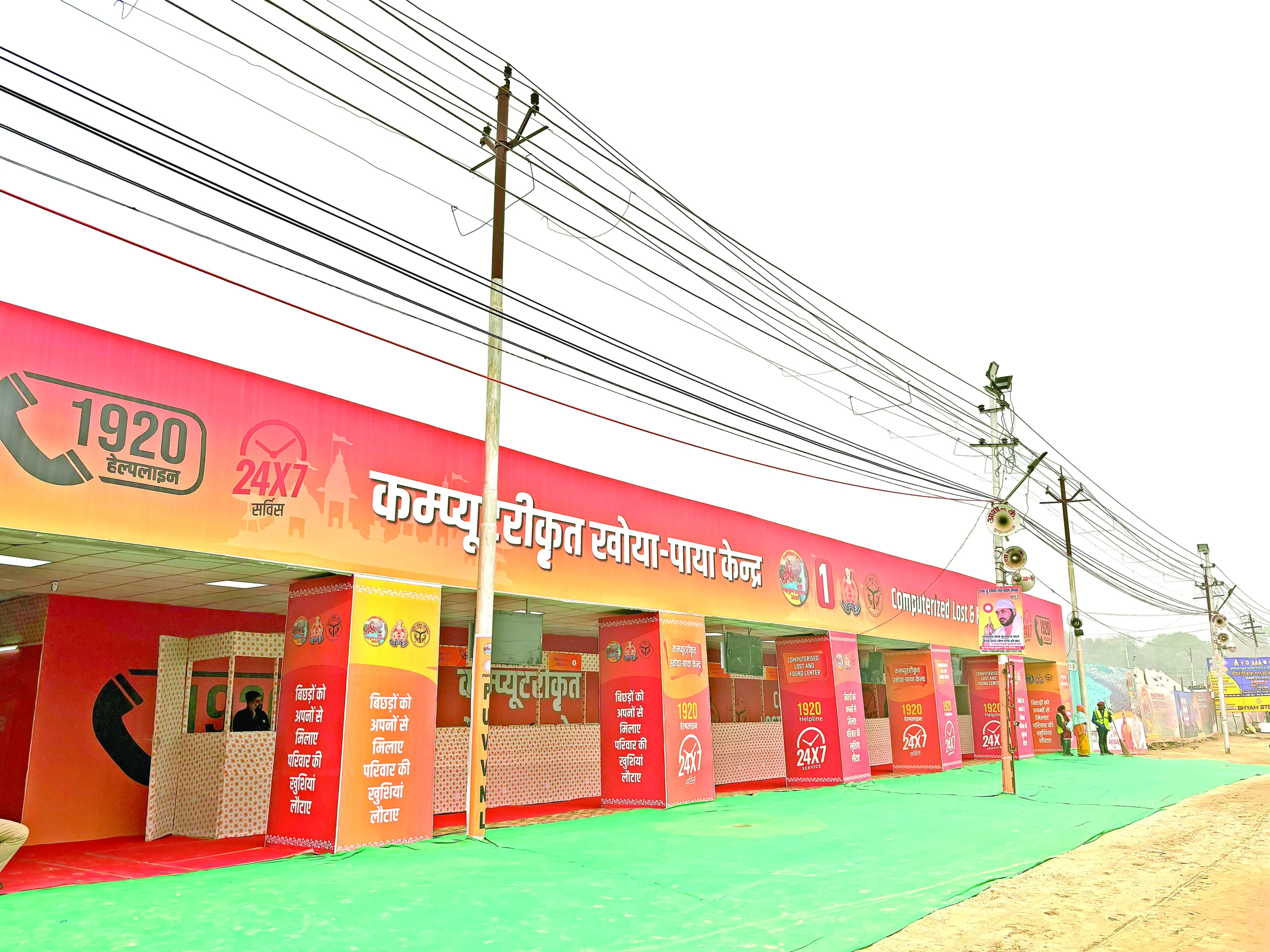
This approach of the Yogi Government also reflects in sanitation and cleanliness. Sanitation workers, who form the backbone of the Kumbh’s infrastructure, expressed their dedication to maintaining cleanliness across the vast festival grounds. “We have been instructed to keep sanitation a top priority,” said a sanitation worker stationed at Triveni Ghat. “Toilets are cleaned immediately after each use, and waste is promptly collected to maintain hygiene. For us, this is not just a job but an opportunity to do sewa of those attending Maha Kumbh,” he added.
Their efforts highlight the importance of sanitation in creating a positive experience for pilgrims. The Uttar Pradesh Government has deployed thousands of workers equipped with modern cleaning equipment to ensure the event remains clean and free from health hazards. This year, sanitation protocols have been elevated with AI-enabled monitoring systems to identify and address problem areas in real time.
To ensure cleanliness throughout the Maha Kumbh, the Mela administration has implemented a meticulous sanitation plan. As a step in this direction ,1.45 lakh toilets are being installed, including 15,000 made of fiber-reinforced polymer (FRP) with septic tanks and another 10,000 FRP toilets equipped with soak pits. One sweeper has been assigned to maintain every 10 toilets, supervised by a designated supervisor for every 10 sweepers. Similarly, each sweeper will manage 20 urinals, with one supervisor overseeing the work of 20 sweepers.
All vendors are required to strictly adhere to established hygiene and safety protocols. Sanitation workers must wear proper Personal Protective Equipment (PPE), including gloves and shoes, to ensure both effective cleanliness and the safety of the workforce.
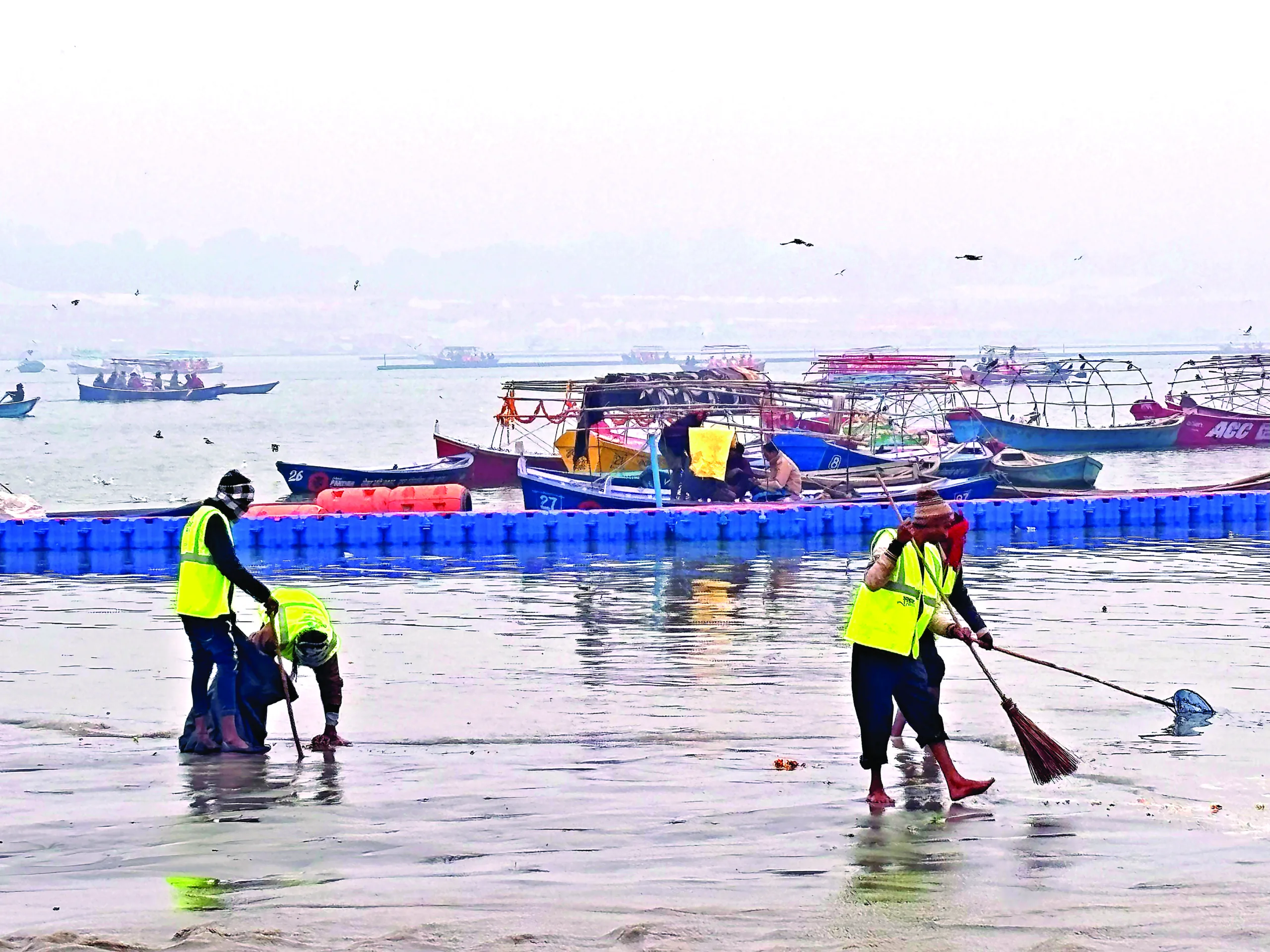
Workers, inspired by their role in this sacred gathering, expressed their commitment to cleanliness. “Being a part of the Maha Kumbh is a once-in-a-lifetime opportunity,” said a sanitation worker. “It’s not just a job—it’s a sewa to the pilgrims and the event itself.”
Beside sanitation, Uttar Pradesh Government has planned every aspect to ensure a safe, secure, and memorable experience for all attendees. With advanced technologies, robust security measures, and extensive resources, the event aims to uphold the sanctity and grandeur of this spiritual mega-festival.
Security has been fortified at temples and key sites in Maha Kumbh Nagar. Intelligence systems are active across the Kumbh Mela area, Prayagraj, and neighbouring districts. Multiple entry points to the district have been established, screening every individual and vehicle. Intelligence Squads have been deployed across the region to monitor suspicious activities and maintain vigilance. A multi-layered security system, from outer perimeters to the inner sanctum, ensures protection. This includes 57 permanent police stations, 13 temporary police stations, and 23 checkpoints.
“Over 10,000 police personnel, alongside PAC, NDRF, and CAPF units, are deployed for crowd management and security. Mock drills by police and ATS teams, alongside intensive inspections of hotels, restaurants, and street vendors, ensure readiness. Enhanced coordination with the railways and traffic management systems has also been implemented,” informed a Rapid Action Force personnel.
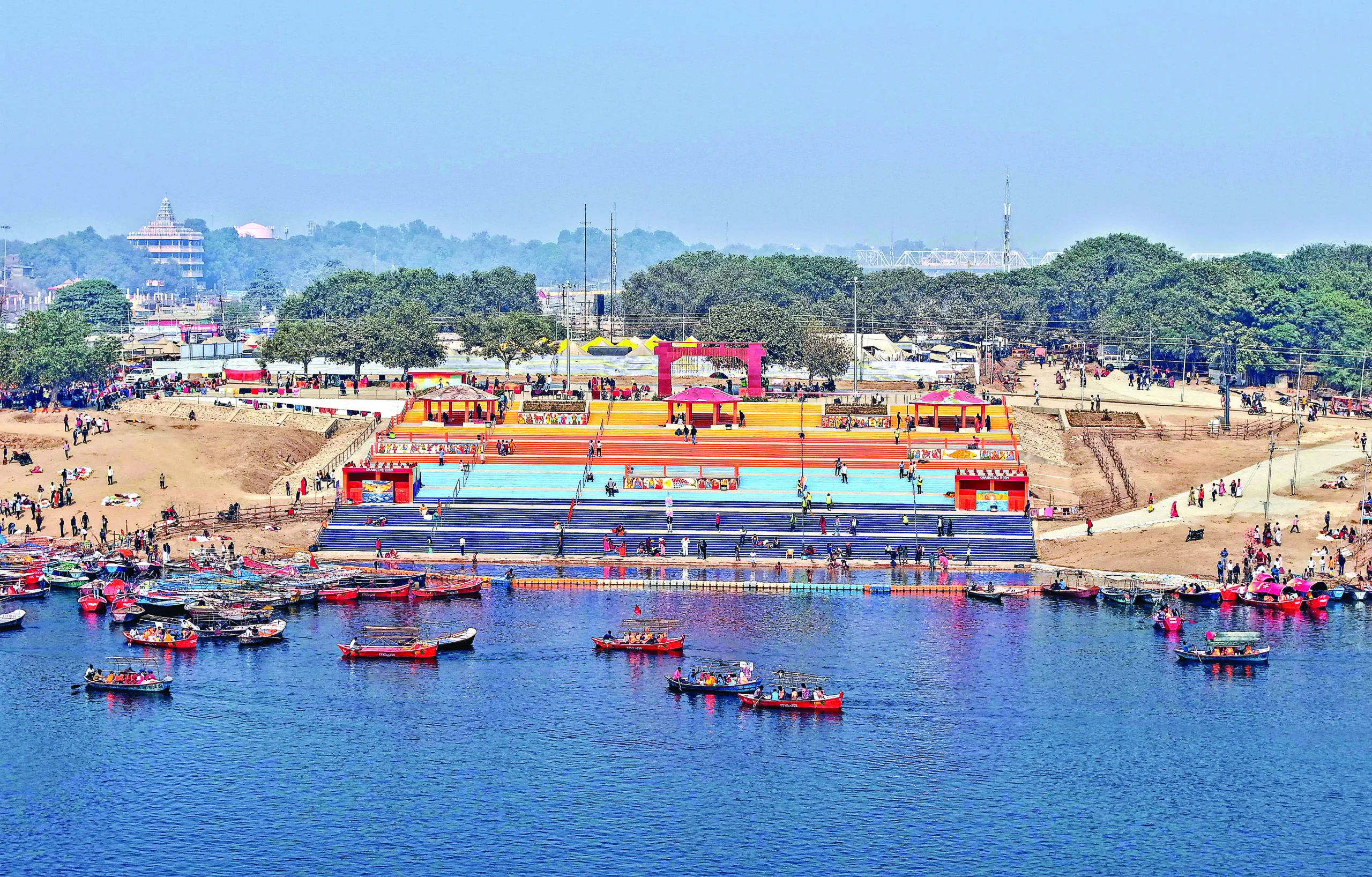
To mitigate fire hazards in the extensive tent city, the Uttar Pradesh Fire and Emergency Services Department has deployed four articulating water towers (AWTs) equipped with advanced video and thermal imaging cameras. AWTs can operate at heights of 35 meters and horizontal distances of 30 meters, ensuring rapid response to fire incidents. A total of 351 firefighting vehicles have been deployed for fire safety. 50+ fire stations, 20 fire posts, and more than 2,000 trained personnel have been stationed.
Maha Kumbh 2025 has also been envisioned as a Digital Maha Kumbh, leveraging cutting-edge technologies. AI-powered cameras, drones, anti-drones, and tethered drones will oversee the vast Mela area. For the first time, underwater drones with advanced imaging capabilities are deployed for 24/7 surveillance beneath Sangam. These drones can operate at depths of 100 meters, transmitting real-time data to the Integrated Command and Control Centre.
Newly introduced multi-disaster response vehicles are equipped with advanced tools such as victim location cameras, debris-lifting machines, and cutting equipment. These vehicles include lifting bags with a capacity of 10 to 20 tonnes and specialised tools to lift objects weighing up to 1.5 tonnes.
“To safeguard crores of devotees along the Sangam, the Government has deployed a large contingent of Water Police. Over 3,800 Water Police personnel, supported by 11 FRP motorboats, 100 diving kits, 440 lifebuoys, and 3,000 life jackets. Three permanent Water Police stations and two floating rescue stations operate 24/7,” said Bhanu Bhaskar, Additional Director General (Prayagraj zone).
High-tech Lost and Found registration centres have been set up across the Mela area to assist pilgrims in reuniting with their families. The event includes advanced medical preparedness with water ambulances equipped with modern facilities. Rescue stations are stocked with lifesaving equipment, and temperature-measuring devices enhance fire-response capabilities.
Apart from the Yogi administration, Rashtriya Swayamsevak Sangh inspired organisation Paryavaran Gatividhi has put in efforts to make Maha Kumbh environment-friendly and plastic free under the Ek Thaila, Ek Thali initiative. “The goal is to reduce plastic usage and encourage sustainable practices. Steel plates and cloth bags are being distributed to devotees and organisations in the Maha Kumbh area. Through this campaign, over 25 lakh steel plates and an equal number of cloth bags are set to be distributed across the entire Kumbh Mela region,” informed Gajendra Singh, Kshetra Sangathan Mantri, Purvi Uttar Pradesh, VHP. These items have been collected from all over the country. A nationwide campaign was conducted for several months to facilitate this collection.
A Boon for the Local Economy
The Maha Kumbh is not just a spiritual congregation; it is a lifeline for the local economy, offering countless opportunities for vendors, artisans, boatmen, and service providers. While critics may argue that such grand events strain resources, the reality on the ground tells a different story. Team Organiser spoke to the people whose lives are directly impacted by this year’s sacred congregation and their stories reflect the festival’s economic vitality and transformative impact.
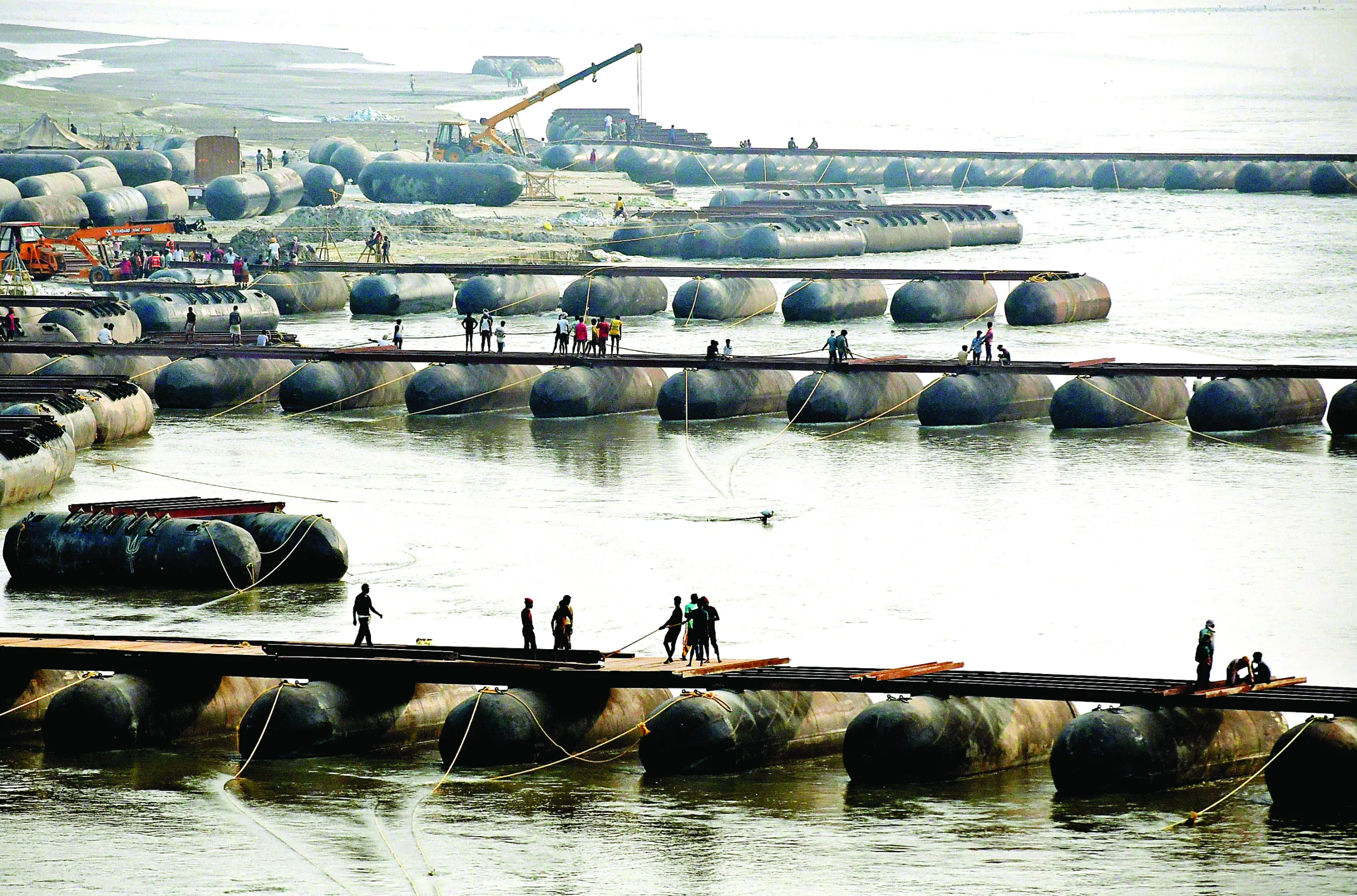
On the bustling banks of the Sangam, a flower vendor Rajendra sat amid garlands of marigold, waiting for his next customer. He sells flowers throughout the year, earning around Rs 300 to Rs 500 per day, making hardly Rs 10,000 to Rs 15,000 per month. However, things will change drastically for him during this time. With a hopeful smile, he shared his experience. “On the days of Amrit Snaans like Mauni Amavasya, Maha Shivratri, and Basant Panchami, I expect to save at least Rs 10,000 to Rs 12,000 per day,” he revealed. For Rajendra, these earnings are not just about financial gain but a celebration of hard work and faith.
The Government’s support for vendors has made a significant difference, he added. “The administration is ensuring that vendors have designated spots, clean surroundings, and no unnecessary trouble. This kind of organisation motivates us to work harder. Those who put in the effort will earn well.”
Not all vendors are locals, but the Maha Kumbh’s inclusivity ensures that people from outside Prayagraj also benefit. We met Santosh from Ghazipur, a chana jor garam seller who traveled from a nearby district to be part of this grand event. “This is my first time at the Kumbh,” he said with excitement. “I’ve always heard about its scale, but being here is overwhelming. I sell more in one day than I usually do in a week back home.”
Satosh happiness was evident as he spoke about the support he received from the administration. “The government has made it easy for people like me to set up shop. They’ve ensured we have access to clean water and waste disposal, and they even guide us to the best locations to attract customers.”
We also spoke to three boatmen, who ferry pilgrims across the sacred waters of Sangam. All three were unanimous in their gratitude for the Maha Kumbh.
Ram Gopal Nishad, who has been rowing boats for at least ten years explained, “On regular days, I earn around Rs 500 to Rs 1,000 daily, but during Kumbh, I make Rs 3,000 to Rs 4,000 per day. This is four times my usual income.” For him, the influx of pilgrims is not just a seasonal opportunity but a lifeline that sustains his family throughout the year.
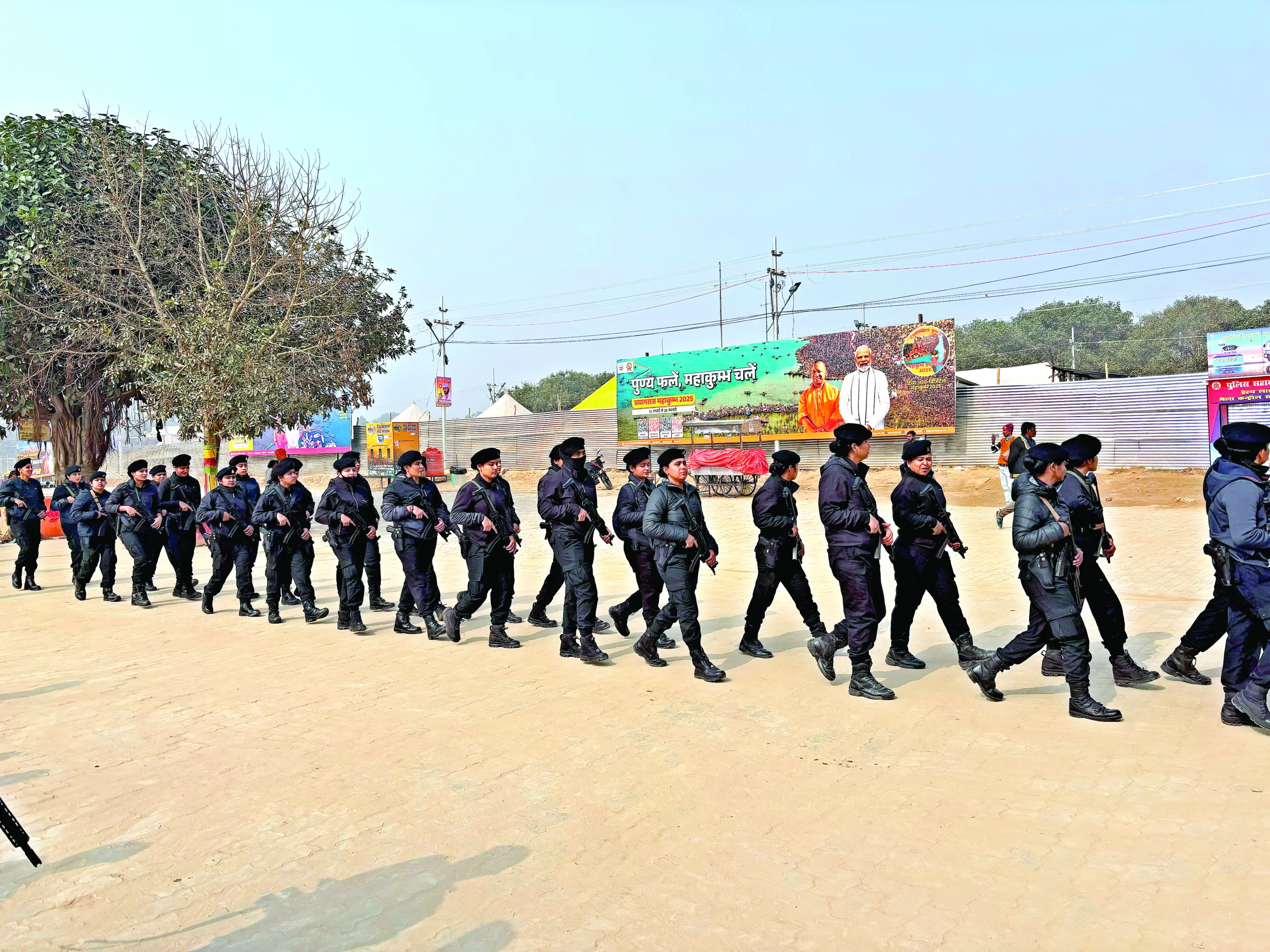
Sanjay Nishad, another boatman happily chimed in, “The pilgrims are generous. They often tip us after a serene ride on the Sangam waters. This is more than just ferrying people; it’s about helping them connect with the divine.” Neeraj Nishad, an elderly man who has been rowing for over three decades, added emotionally, “The Kumbh is not just a festival; it’s a blessing for people like me. The income I earn during this time helps me pay off debts and secure my family’s future.” Apart from locals, more than 10,000 boatmen have come from across the nation to mint this opportunity. Hotels and guesthouses are booked months in advance, providing jobs to thousands in hospitality. Local artisans find new markets for their crafts, and food vendors thrive as millions of pilgrims seek traditional and affordable meals. For many, the Maha Kumbh is not just about faith—it’s about financial stability and a brighter future. Maha Kumbh is far more than a gathering of millions; it is a spiritual odyssey that embodies the very soul of Sanatan Dharma. Rooted in ancient history and cosmic alignments, it is a sacred reminder of humanity’s eternal quest for purity, liberation, and connection with the divine. For the countless devotees who travel from the farthest corners of the globe, the Kumbh is a place to cleanse their souls, renew their faith, and experience the sanctity of the confluence of the Ganga, Yamuna, and Saraswati.
With the meticulous preparations for Maha Kumbh 2025, Yogi Adityanath Government is trying to set a benchmark in blending spirituality with modernisation. From AI-powered surveillance to high-priority sanitation protocols, and from digital connectivity to empowering the local economy, every facet of this grand event demonstrates unparalleled preparation and inclusivity.


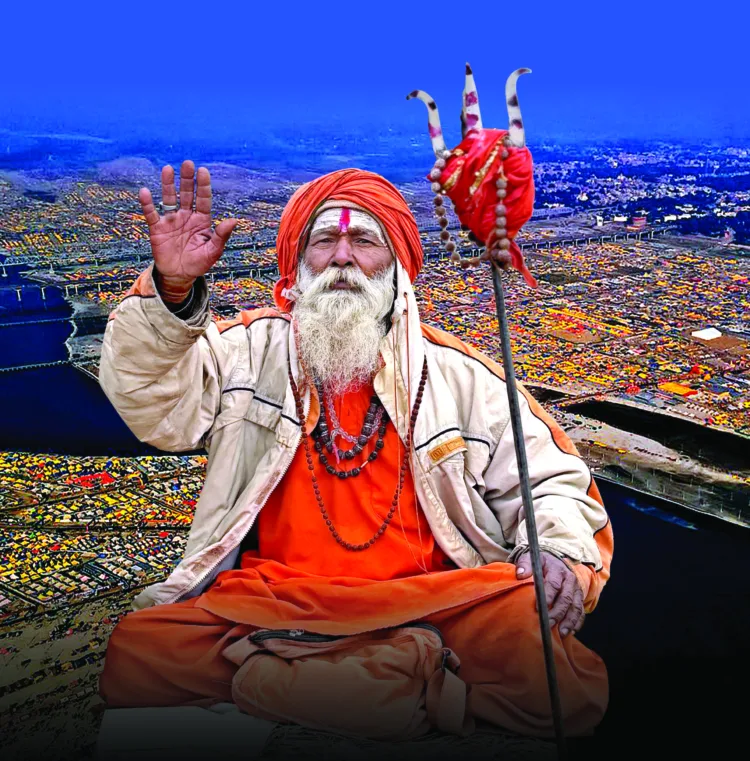
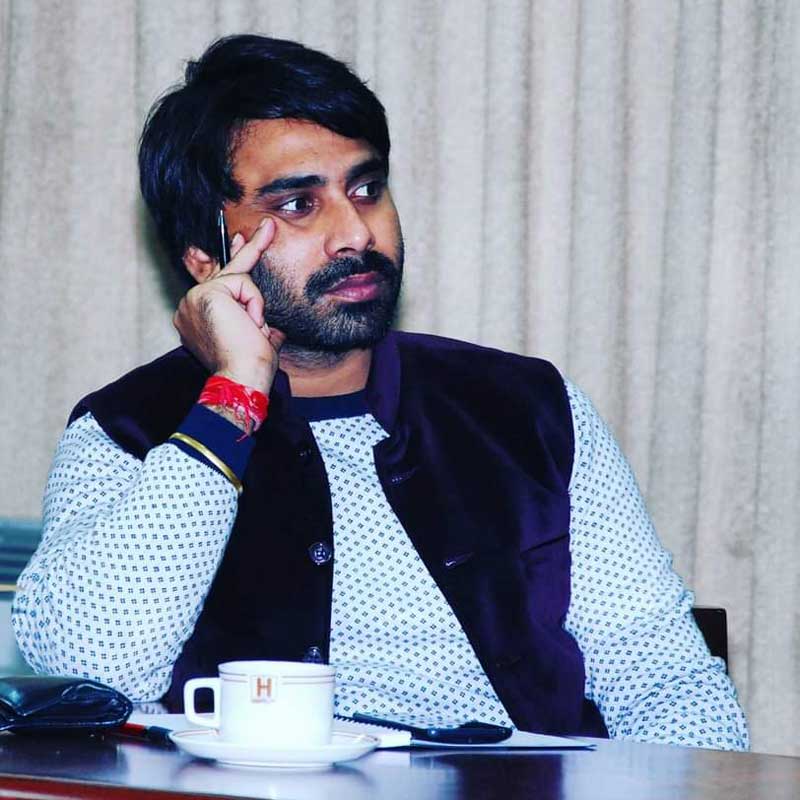
















Comments